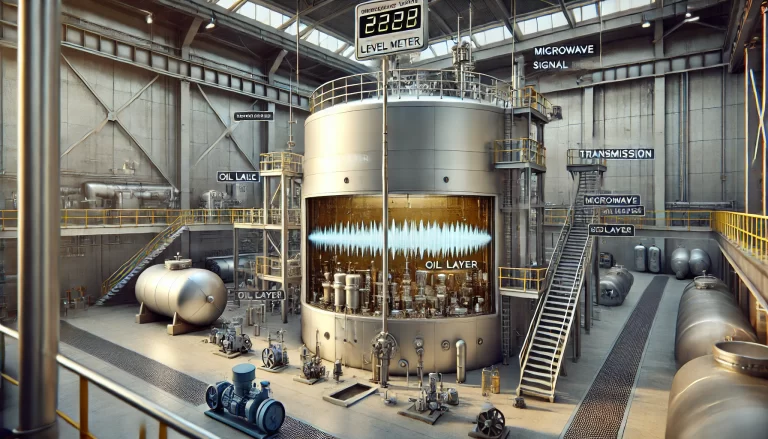Oil tank calibration and measurement are crucial processes in the storage, transportation, and sale of petroleum products. Accurate measurement ensures proper inventory control, minimizes losses, and maintains compliance with industry regulations. The measurement methods are generally categorized into static measurement and dynamic measurement. Static measurement is used for stationary oil in storage tanks, whereas dynamic measurement is conducted while the oil is in motion.
Static Measurement
Static measurement is further divided into manual measurement and automatic measurement.
Manual Measurement
Manual measurement involves using dip tapes and other measuring instruments to obtain data such as total oil height, water height, measurement temperature, test temperature, and apparent density. These values are then used to calculate the stored oil volume through lookup tables or input into a dynamic tank accounting system. The following steps ensure accurate manual measurement:
Inspection of Measuring Equipment:
Ensure that measuring tools, including dip tapes and measuring rods, are in good condition, without bends or distortions.
Verify that the measurement scale on the dip tape is clear and that all equipment is within its calibration validity period.
Preparation for Measurement:
Stand on the upwind side of the tank to minimize exposure to vapors.
Clean the measuring tape using a lint-free cotton cloth to remove oil residues.
Measurement Procedure:
Slowly lower the measuring tape along the guide slot until it touches the oil surface.
Pause briefly upon contact with the oil surface to avoid disturbing the liquid level.
When the measuring weight (plummet) is about 200mm from the tank bottom, further slow down its descent to prevent impact with the base.
Once the measuring weight reaches the bottom, swiftly lift the tape vertically to minimize disturbances to the liquid level.
Read the measurement value carefully:
Read smaller values first, followed by larger values.
Ensure the measuring tape is not laid flat or inverted.
Accuracy and Repetition:
Conduct two measurements, ensuring the discrepancy does not exceed 1mm. If the deviation is greater, repeat the process until consistent values are obtained.

Automatic Measurement
Automatic measurement involves the installation of level gauges, such as servo level gauges and float level gauges, along with sensors that measure temperature, pressure, and density inside the tank. The system automatically collects data and transmits signals to a central monitoring system, displaying real-time oil height, temperature, density, volume, and weight.
However, automatic measurement systems have limitations:
Many oil depots find them insufficiently precise due to potential errors in sensor readings, temperature variations, and equipment calibration issues.
As a result, automatic measurements are often used for reference purposes, while manual measurements remain necessary for accurate verification, especially during product transfers and reconciliations.

Dynamic Measurement
Dynamic measurement is primarily used for measuring the oil level in tanker trucks during loading and unloading processes. The procedure involves:
Preparation:
Stop any fuel dispensers connected to the storage tank.
Record the cumulative pump meter reading before beginning the measurement.
Post-Unloading Stabilization:
Allow the oil to settle for a few minutes before performing the measurement to ensure accurate readings.
Measurement Steps:
Clean the measuring tape with a cotton cloth to remove any oil residue.
Lower the measuring tape vertically into the tank from a fixed measuring point.
When the measuring weight reaches the oil surface, slow its descent to prevent disturbance.
Reduce speed further when the weight is about 20cm from the bottom to avoid impact.
Upon contact with the tank bottom, swiftly raise the tape while maintaining vertical alignment to prevent tilting, which could cause liquid disturbances.
Observe the oil-wetted line on the tape and read the oil level accurately.
Accuracy and Repetition:
Measurement precision should be up to 1mm.
Each measurement should be conducted at least twice, ensuring the difference does not exceed 1mm.
If the discrepancy exceeds the limit, the measurement should be repeated.
The final measurement values should be recorded in the measurement log.

Conclusion
Both static and dynamic measurements are essential for accurate oil tank calibration. While manual measurement remains the most reliable method, automatic measurement provides useful real-time monitoring but should not be solely relied upon for financial transactions or inventory reconciliation. Adhering to standardized operating procedures ensures measurement accuracy, reduces losses, and improves inventory management efficiency.
